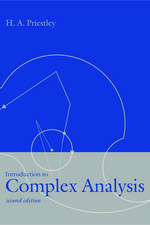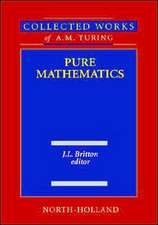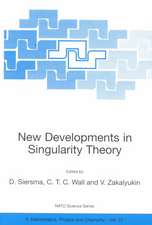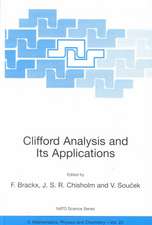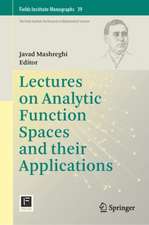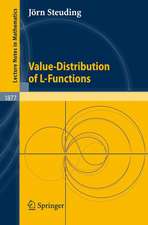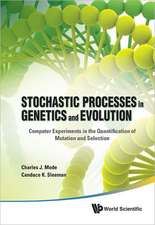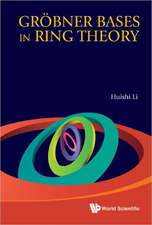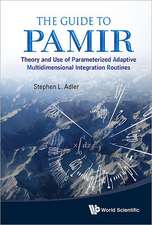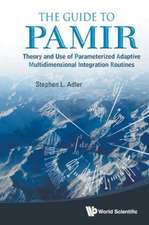Stochastic Models, Information Theory, and Lie Groups, Volume 1: Classical Results and Geometric Methods: Applied and Numerical Harmonic Analysis
Autor Gregory S. Chirikjianen Limba Engleză Hardback – 15 sep 2009
Din seria Applied and Numerical Harmonic Analysis
-
 Preț: 399.29 lei
Preț: 399.29 lei - 20%
 Preț: 673.02 lei
Preț: 673.02 lei - 17%
 Preț: 431.76 lei
Preț: 431.76 lei - 19%
 Preț: 443.08 lei
Preț: 443.08 lei -
 Preț: 412.57 lei
Preț: 412.57 lei - 15%
 Preț: 550.04 lei
Preț: 550.04 lei - 15%
 Preț: 653.98 lei
Preț: 653.98 lei - 18%
 Preț: 1014.28 lei
Preț: 1014.28 lei - 15%
 Preț: 647.92 lei
Preț: 647.92 lei -
 Preț: 413.37 lei
Preț: 413.37 lei - 15%
 Preț: 648.74 lei
Preț: 648.74 lei - 15%
 Preț: 654.77 lei
Preț: 654.77 lei - 15%
 Preț: 636.80 lei
Preț: 636.80 lei - 15%
 Preț: 532.89 lei
Preț: 532.89 lei - 15%
 Preț: 646.62 lei
Preț: 646.62 lei - 15%
 Preț: 653.98 lei
Preț: 653.98 lei -
 Preț: 397.38 lei
Preț: 397.38 lei - 15%
 Preț: 656.43 lei
Preț: 656.43 lei - 15%
 Preț: 661.97 lei
Preț: 661.97 lei - 18%
 Preț: 957.13 lei
Preț: 957.13 lei - 24%
 Preț: 829.71 lei
Preț: 829.71 lei -
 Preț: 398.35 lei
Preț: 398.35 lei - 20%
 Preț: 569.85 lei
Preț: 569.85 lei -
 Preț: 392.21 lei
Preț: 392.21 lei - 18%
 Preț: 1121.76 lei
Preț: 1121.76 lei - 18%
 Preț: 1001.32 lei
Preț: 1001.32 lei -
 Preț: 387.75 lei
Preț: 387.75 lei - 15%
 Preț: 653.98 lei
Preț: 653.98 lei - 20%
 Preț: 567.32 lei
Preț: 567.32 lei - 20%
 Preț: 573.76 lei
Preț: 573.76 lei -
 Preț: 406.80 lei
Preț: 406.80 lei -
 Preț: 387.38 lei
Preț: 387.38 lei - 5%
 Preț: 1168.71 lei
Preț: 1168.71 lei -
 Preț: 400.85 lei
Preț: 400.85 lei -
 Preț: 398.15 lei
Preț: 398.15 lei - 15%
 Preț: 644.49 lei
Preț: 644.49 lei - 19%
 Preț: 575.82 lei
Preț: 575.82 lei - 15%
 Preț: 703.71 lei
Preț: 703.71 lei - 20%
 Preț: 334.71 lei
Preț: 334.71 lei - 15%
 Preț: 525.54 lei
Preț: 525.54 lei -
 Preț: 405.06 lei
Preț: 405.06 lei - 15%
 Preț: 536.96 lei
Preț: 536.96 lei
Preț: 602.10 lei
Preț vechi: 708.35 lei
-15% Nou
Puncte Express: 903
Preț estimativ în valută:
115.21€ • 120.29$ • 95.35£
115.21€ • 120.29$ • 95.35£
Carte tipărită la comandă
Livrare economică 04-18 aprilie
Preluare comenzi: 021 569.72.76
Specificații
ISBN-13: 9780817648022
ISBN-10: 081764802X
Pagini: 383
Ilustrații: XXII, 383 p. 13 illus.
Dimensiuni: 178 x 254 x 30 mm
Greutate: 0.92 kg
Ediția:2009
Editura: Birkhäuser Boston
Colecția Birkhäuser
Seria Applied and Numerical Harmonic Analysis
Locul publicării:Boston, MA, United States
ISBN-10: 081764802X
Pagini: 383
Ilustrații: XXII, 383 p. 13 illus.
Dimensiuni: 178 x 254 x 30 mm
Greutate: 0.92 kg
Ediția:2009
Editura: Birkhäuser Boston
Colecția Birkhäuser
Seria Applied and Numerical Harmonic Analysis
Locul publicării:Boston, MA, United States
Public țintă
GraduateCuprins
Gaussian Distributions and the Heat Equation.- Probability and Information Theory.- Stochastic Differential Equations.- Geometry of Curves and Surfaces.- Differential Forms.- Polytopes and Manifolds.- Stochastic Processes on Manifolds.- Summary.
Textul de pe ultima copertă
The subjects of stochastic processes, information theory, and Lie groups are usually treated separately from each other. This unique two-volume set presents these topics in a unified setting, thereby building bridges between fields that are rarely studied by the same people. Unlike the many excellent formal treatments available for each of these subjects individually, the emphasis in both of these volumes is on the use of stochastic, geometric, and group-theoretic concepts in the modeling of physical phenomena.
Volume 1 establishes the geometric and statistical foundations required to understand the fundamentals of continuous-time stochastic processes, differential geometry, and the probabilistic foundations of information theory. Volume 2 delves deeper into relationships between these topics, including stochastic geometry, geometric aspects of the theory of communications and coding, multivariate statistical analysis, and error propagation on Lie groups.
Key features and topics of Volume 1:
* The author reviews stochastic processes and basic differential geometry in an accessible way for applied mathematicians, scientists, and engineers.
* Extensive exercises and motivating examples make the work suitable as a textbook for use in courses that emphasize applied stochastic processes or differential geometry.
* The concept of Lie groups as continuous sets of symmetry operations is introduced.
* The Fokker–Planck Equation for diffusion processes in Euclidean space and on differentiable manifolds is derived in a way that can be understood by nonspecialists.
* The concrete presentation style makes it easy for readers to obtain numerical solutions for their own problems; the emphasis is on how to calculate quantities rather than how to prove theorems.
* A self-contained appendix provides a comprehensive review of concepts from linear algebra, multivariate calculus, and systems of ordinary differential equations.
Stochastic Models, Information Theory, and Lie Groups will be of interest to advanced undergraduate and graduate students, researchers, and practitioners working in applied mathematics, the physical sciences, and engineering.
Volume 1 establishes the geometric and statistical foundations required to understand the fundamentals of continuous-time stochastic processes, differential geometry, and the probabilistic foundations of information theory. Volume 2 delves deeper into relationships between these topics, including stochastic geometry, geometric aspects of the theory of communications and coding, multivariate statistical analysis, and error propagation on Lie groups.
Key features and topics of Volume 1:
* The author reviews stochastic processes and basic differential geometry in an accessible way for applied mathematicians, scientists, and engineers.
* Extensive exercises and motivating examples make the work suitable as a textbook for use in courses that emphasize applied stochastic processes or differential geometry.
* The concept of Lie groups as continuous sets of symmetry operations is introduced.
* The Fokker–Planck Equation for diffusion processes in Euclidean space and on differentiable manifolds is derived in a way that can be understood by nonspecialists.
* The concrete presentation style makes it easy for readers to obtain numerical solutions for their own problems; the emphasis is on how to calculate quantities rather than how to prove theorems.
* A self-contained appendix provides a comprehensive review of concepts from linear algebra, multivariate calculus, and systems of ordinary differential equations.
Stochastic Models, Information Theory, and Lie Groups will be of interest to advanced undergraduate and graduate students, researchers, and practitioners working in applied mathematics, the physical sciences, and engineering.
Caracteristici
Unique work: the only book to use tools and concepts from several mathematical areas usually treated in separate books—stochastic processes, information theory, and Lie theory—thereby building bridges between topics rarely studied by the same individuals. Extensive exercises Concrete presentation makes it easy for readers to obtain numerical solutions for their own problems Numerous examples used to motivate concepts with an emphasis on modeling physical phenomena Suitable as a textbook for advanced undergraduate and graduate courses in applied stochastic processes or differential geometry For a broad audience of advanced undergraduate and graduate students, researchers, and practitioners in applied mathematics, the physical sciences, and engineering Includes supplementary material: sn.pub/extras

